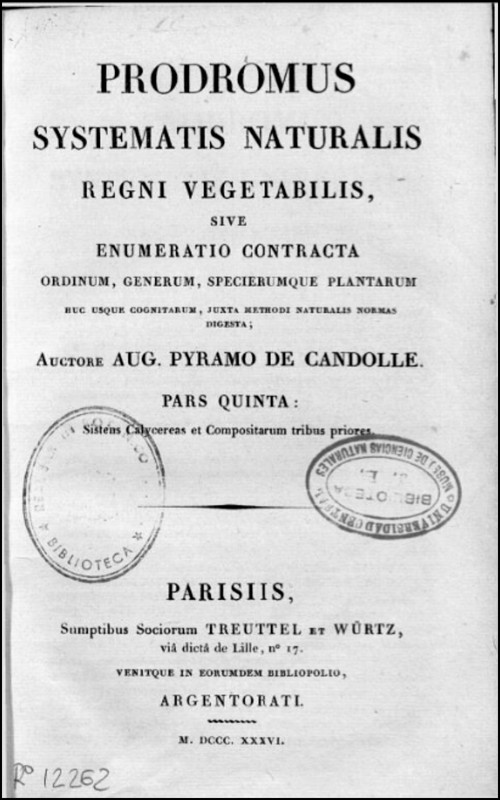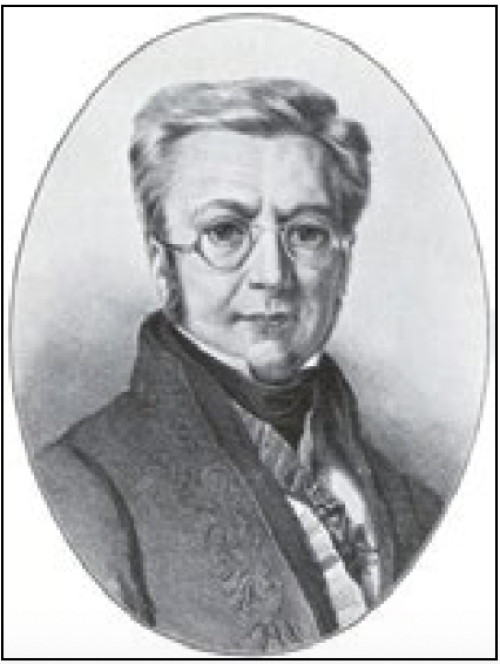Augustin Pyramus de Candolle (1778–1841)
Augustin Pyramus de Candolle, was a Swiss-French botanist. de Candolle moved to Paris as a teenager to pursue studies in medicine and natural history. His talent was immediately apparent to some of the greatest names of the day, namely Lamarck and Cuvier, who inspired him towards botanical research. It was in this field of research that he quickly achieved first class status amongst his fellow workers. de Candolle worked in all areas of botany, but he was especially a prominent systematist. de Candolle also coined the term “taxonomy” for these systematic studies. It was de Candolle who recognised the importance of linking form (anatomy and morphology) to function. He also contributed many works on agronomy; biometry; phytochemistry; pharmacology; and physiology. He also worked on both living and fossil forms.
The Prodromus Systematis Naturalis Regni Vegetabilis, compiled by Augustin Pyramus de Candolle, is a detailed monograph of a large number of plant families. This work was continued by Alphonse de Candolle and Casimir Pyrame de Candolle, who each contributed more plant species to the Prodromus catalogue of plants. In 1824 in this work, de Candolle provided the most up to date treatment of the genus Drosera. His work included 32 species hailing from North America, Europe, South Africa, Australia and New Zealand, amongst them several new species including D. banksii, D. madagascariensis and D. menziesii.
For more information on the life of Augustin Pyramus de Candolle please see Wikipedia.
The ICPS claims no copyright on the content of this page. Please see the list of sources used for the pages on key historical figures in the study of carnivorous plants.

Prodromus Systematis Naturalis Regni Vegetabilis.

Augustin Pyramus de Candolle.
